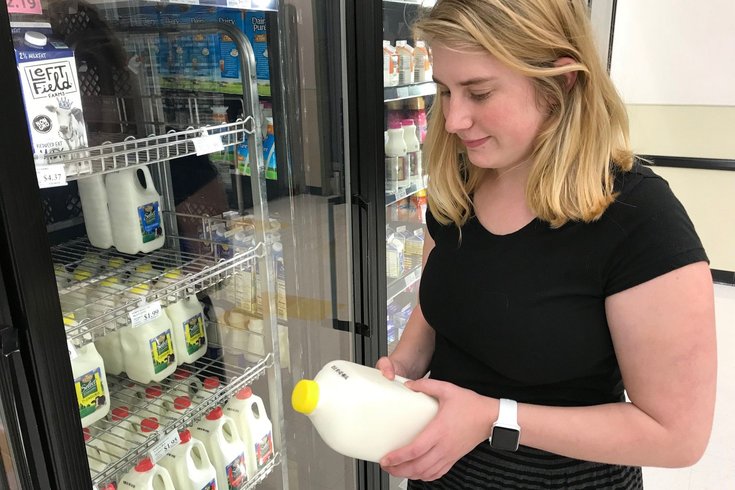
December 11, 2024
 Colleen Kottke/Wisconsin State Farmer
Colleen Kottke/Wisconsin State Farmer
Regulations on 'use by' and 'sell by" date labels vary widely by state. Pennsylvania and New Jersey only require date labeling on milk and shellfish.
If "sell by," "use by" and other food label dates seem confusing, there's a reason.
Federal regulations do not require product dating labels except for infant formula, according to the U.S. Department of Agriculture. Beyond that, regulations regarding date labels vary widely state to state.
"The USDA has a lot of rules and regulations governing the safety of the food itself, but providing an expiration date is not one of them," clinical dietitian Beverly Rodgers, of the MD Anderson Cancer Center in Houston, Texas, said in a health system publication. "This comes as a surprise to a lot of people."
Food manufacturers have the option to include date labels, but these dates do not regulate safety, just peak quality or freshness. Consumers often mistake these labels as indicators of whether or it's safe to eat or drink a product and wind up tossing out food that may still be good. Confusion over food packaging date labels accounts for up to 7% of all consumer waste, according to ReFED, a nonprofit aimed at eliminating food waste.
To cut down on food waste, California recently banned the use of "sell by" dates and standardized packaging labels. Only two labels are now allowed on food products in the state: "Best if used (or frozen) by," which indicates peak freshness, and "use (or freeze by)," which indicates food safety.
Pennsylvania and New Jersey only have date labeling requirements for milk and shell fish.
For pasteurized milk, Pennsylvania requires manufacturers to print a "sell by" date that "does not exceed 17 days beginning after midnight on the day on which the milk was pasteurized." Shellfish must have a "sell by" or "best if used by" label with a "reasonable date when the product would be expected to reach the end of its shelf life."
In New Jersey, dairy products cannot be sold past "sell by" dates, and shellfish must have a "sell by" date or list the date that the shellfish were shucked.
"The bottom line is that you have to be aware of what's going on with your food, and use your senses and best judgment," Rodgers said. "If you open something up — even if it's before the date printed on the package — and there's a funny smell, or it's slimy and gross, it's probably been contaminated, so you don't want to eat it."
Here is an explanation from the USDA on commonly-used packaging labels:
• "Best if used by/before" dates indicate when products will be of best flavor or quality. They are not purchase or safety dates.
• "Sell by" dates tells stores how long to display products. They are used for inventory management, not food safety.
• "Use-by" dates contain the last recommended dates that products can be used at peak quality. They are not safety dates except when used on infant formula.
• "Freeze by" dates indicate when products should be frozen to maintain peak quality. They are not purchase or safety dates.